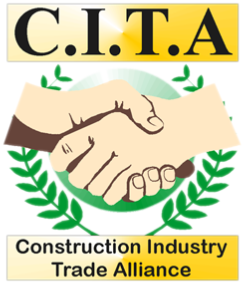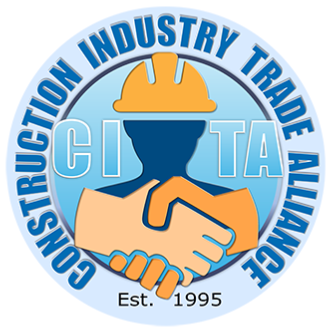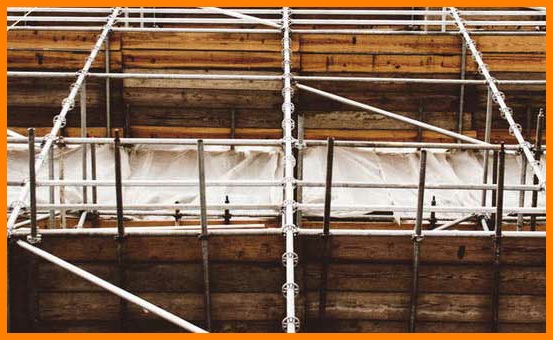

EMAIL: enquiries@cita.co.uk

Copyright © CITA Construction Industry Trade Alliance -

BUILDING TRADE ASSOCIATION







CONSTRUCTION INDUSTRY TRADE ALLIANCE

CITA is a UK Trade Association for the Construction & Building Industry
Tel: 0845 250 4390 Fax: 0845 250 4391




Reducing the Risk of Working at Height on Construction Sites




Working at Height on Construction Sites
■ Have you planned the work properly and identified suitable precautions to make sure work can be carried out safely?
■ Have you thought about whether you can avoid working at height by using different equipment or a different work method?
■ Can you use equipment that will prevent a fall from happening, such as scaffolding or a mobile elevating work platform?


Working at height
■ Can you put in place measures to reduce the distance and consequences of a fall should one happen, such as nets, soft landing systems or safety decks?
■ Will the weather conditions threaten the health and safety of those carrying out the work?
■ Have you thought about all the options and are you certain that you are gaining access to height using the safest means possible?
Ladders
■ Ladders and stepladders are the last resort. Can you buy or hire some alternative equipment that would provide a safer means of access?
■ Is the work of short duration and low risk?
■ Are they in good condition?
■ Do ladders rest against a solid surface and not on fragile or insecure materials?
■ Are ladders secured at the top and bottom to prevent them slipping sideways and outwards?
■ Do ladders rise at least a metre above their landing place? If not, are there other handholds available?
■ Are the ladders positioned so that users don’t have to overstretch?
■ Do you have to use the top three rungs of a stepladder? If so your stepladder is too short.
■ Is the user competent? Those using ladders should be trained to use the equipment safely.
Roofwork
- Is there edge protection to stop people or materials falling?
- During industrial roofing, have nets been provided to stop people falling from the leading edge of the roof and from partially fixed sheets?
- Where nets are used, have they been hung safely?
- Have you identified fragile materials such as cement sheets and roof lights which could be fragile?
- Have you taken precautions to stop people falling through fragile materials when working on the roof, eg by providing barriers, covers or working platforms?
- Are people kept away from the area below the roof work?
- Are roofworkers trained and experienced to recognise the risks and are they competent to do the work
Scaffolds
■ Are scaffolds erected, altered and dismantled by competent people?
■ Are all uprights provided with base plates (and, where necessary, timber sole plates)?
■ Are all uprights, ledgers, braces and struts in position?
■ Is the scaffold secured to the building or structure in enough places to prevent collapse?
■ Are there double guard rails and toe boards, or other suitable protection at every edge to prevent falling.
■ Are additional brick guards provided to prevent materials falling from scaffolds?
■ Are the working platforms fully boarded, and are the boards arranged to avoid tipping or tripping?
■ Are there effective barriers or warning notices in place to stop people using an incomplete scaffold, eg where working platforms are not fully boarded?
■ Is the scaffold strong enough to carry the weight of materials stored on it and are these evenly distributed?
■ Are scaffolds being properly maintained?
■ Does a competent person inspect the scaffold or proprietary tower scaffold regularly, eg at least once a week; and always after it has been altered, damaged and following bad weather?
■ Are the results of inspections recorded?
■ Are tower scaffolds being erected using either the ‘3T’ or advance guard rail method, and are they being used in accordance with suppliers’ instructions?
■ Have the wheels of tower scaffolds been locked when in use and are the platforms empty when they are moved?
Excavations
- Is there enough support for the excavation, or has it been sloped or battered back to a safe angle?
- Is a safe method used for putting in the support, without people working in an unsupported trench?
- Is there safe access into the excavation, eg a sufficiently long, secured ladder?
- Are there barriers or other protection to stop people and vehicles falling in?
- Are properly secured stop blocks provided to prevent tipping vehicles falling in?
- Could the excavation affect the stability of neighbouring structures or services?
- Are materials, spoil and plant stored away from the edge of the excavation to reduce the chance of a collapse?
- Is the excavation regularly inspected by a competent person.

This article use information obtained from HSE Health and Safety Leaflet and is reproduced under the terms of the Open Government Licence.

BACK TO ADVICE